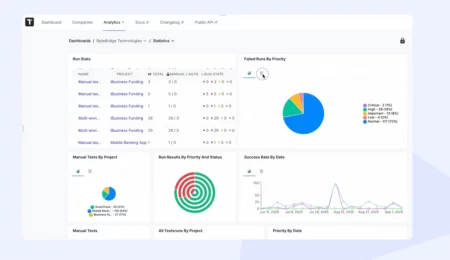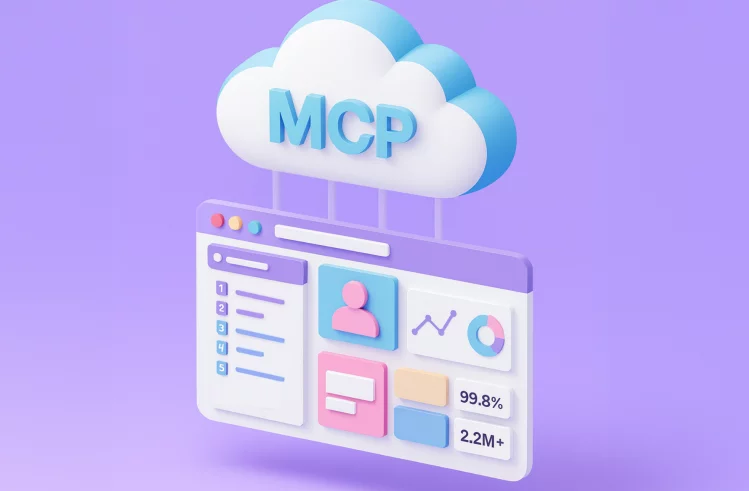Many modern applications are highly complex and require a lot of testing. However, QA and development teams often lack the time and resources to test every program component. Thanks to risk-based testing, they can solve this potential problem and focus on the software’s most critical areas that require attention. By prioritizing tests based on risk, organizations can optimize their testing processes, reduce the likelihood of critical failures, and deliver software that meets both technical and business requirements. Furthermore, they achieved 35% higher ROI on their test investments according to a 2023 study.
What is Risk Based Testing in Software Testing?
As a software testing type, risk-based testing is a process in which the test execution of the QA team should be prioritized based on risk to make sure critical and vulnerable areas receive proper attention.
In the context of Risk-based testing, Paul Gerrard and Nail Thompson determine in the book Risk-based E-business testing:
A risk threatens one or more of a project’s cardinal objectives and has an uncertain probability. Risk is simply a possible mode of failure. When we consider the potential risks of failure in our system, we are making only a speculative bug prediction.
The evidence we gather from risk-based testing reduces some uncertainty, and although we can never eliminate the possibility of failure — which is the case — what testing does is it decreases the uncertainty surrounding a mode of failure.
Thus, by identifying major risk factors, teams identify bugs’ impact and pinpoint which ones will likely cause defects. Let’s consider a real-world use case to know how to formulate a risk-based testing approach 👀
Risk Based Testing Example
Alright, we are moving on! In the banking platform, user authentication and authorization, payment gateway, and credit assessment are high-risk areas because failures can contribute to financial loss, data breaches, and reputational damage.
Conversely, showing an incorrect ATM location or failing to load the map presents a low risk. Just because it may be inconvenient for customers, it doesn’t lead to a security or financial vulnerability.
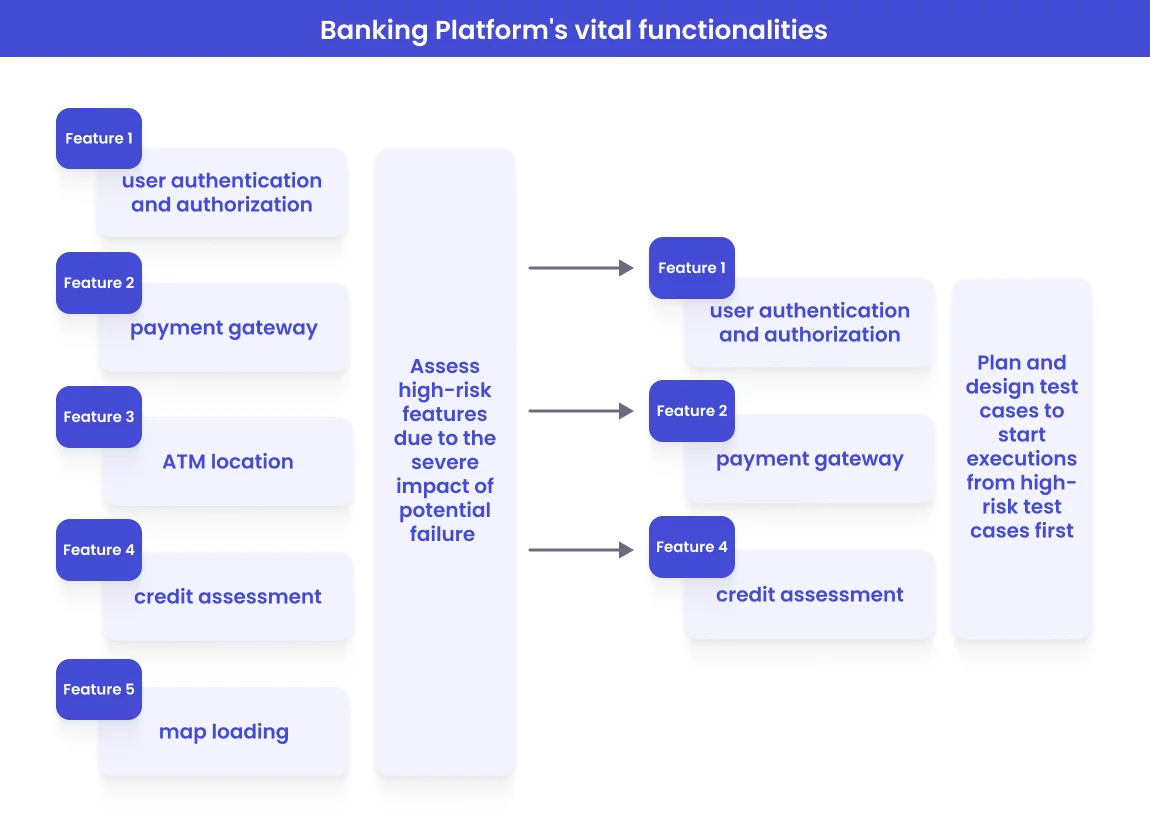
Discover how teams will act in this situation:
- They identify functionalities (user authentication and authorization, payment gateway, credit assessment) as high risk due to the severe impact of potential failures while incorrect ATM location and map loading failure are considered low risk.
- Theyplan and design test cases that will cover every possible scenario as well as assign tasks.
- They start test executions from high-risk test cases to address issues first, while monitoring and carrying out standard test execution for low-risk test cases.
- They continuously keep tracking to quickly detect and respond to any new issues.
What is the Purpose of Risk Based Testing?
The aim is to focus QA work on possible areas which are likely to fail or those whose failure would cause the most harm. They are the following:
- Delivering a stable and reliable product for the most important functionalities.
- To minimize potential negative risks, consequences, prevent financial losses, avoid data breaches, and protect the company’s reputation.
- To increase confidence in the product’s reliability, performance, and security.
What are Key Risk Categories in Software Testing?
When implementing risk-based testing, organizations typically consider several risk dimensions:
- Business risks: features and functionality which closely related to revenue generation, customer satisfaction, or competitive advantage.
- Operational risks: system reliability and stability, performance under load, or security weaknesses.
- Technical risks: complex code, architectural flaws, new technologies, security vulnerabilities.
- Compliance risks: features which require regulatory or legal adherence.
- Project risks: time constraints, resource limitations, third-party dependencies, insufficient skills
Knowing that, teams should systematically assess each app feature against these types of risks to have a better understanding of where potential issues might arise and what their potential impact is. Here you can find more information about risk management.
Who Performs Risk Based Testing?
When performing risk based testing in software testing, specialists work in collaboration throughout the software development lifecycle. While QA engineers or testers often carry out the execution, multiple specialists take part in identifying, assessing, and prioritizing risks. They are the following:
- QA Engineers(Testers), QA Managers. They are the key specialists who are responsible for identifying, assessing, and prioritizing risks from a testing perspective. They also design, execute, and maintain test cases focused on high-risk areas while reporting bugs and providing feedback on risk mitigation.
- Software Engineers. They fix identified bugs and point out technically weak parts of the system.
- Project Managers. They are responsible for allocating resources among teams or specialists and managing timelines based on risk priorities. They also take place in keeping the team aligned and informed about risks.
Principles of Risk-Based Testing
If you aim to prevent any risks which impact app functionality and launch high-quality applications, you should apply risk-based testing. To use it more effectively, you must understand the key principles of risk based testing. Here are some of those:
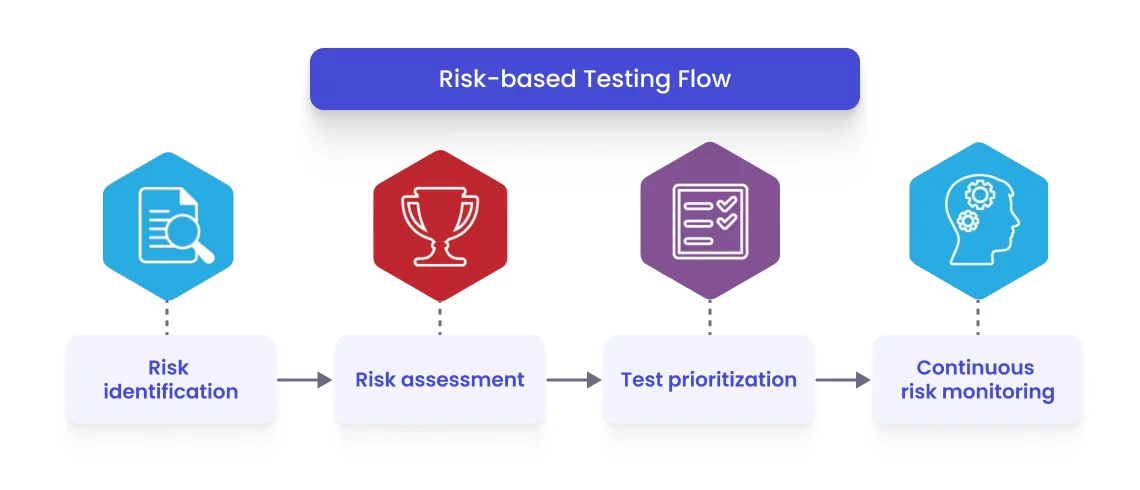
- Risk identification. Risks can stem from a variety of sources (technical complexities, integration points, user requirements, and security vulnerabilities) and should be identified. To effectively test, the level of effort should correspond to the software’s risk level.
- Risk assessment. Once risks are identified, they must be assessed to determine their likelihood and impact and focus testing activities where they’ll do the most good, because not every part of the application requires equal attention and needs testing.
- Test prioritization. To prioritize tests for the riskiest areas, either because they’re likely to fail or because failure would cause the most harm.
- Continuous risk monitoring. To make the process ongoing and iterative by identifying risks and splitting them into smaller units for better management.
How Risk-Based Testing Differs from Other Approaches
Understanding how risk-based testing compares to other methodologies is crucial for selecting the most effective strategy for your project.
| Risk-based | Waterfall | Agile Testing | BDD Testing | |
| Goal | Aims to optimize and focus testing efforts where risks are highest. | It makes sure each phase of the SDLC is completed and fully tested before moving to the next. | Deliver working software through continuous feedback and collaboration. | Focus on teamwork through clear and executable software specifications (Gherkin). |
| Approach | It is used to test the riskiest areas with optimal resources used. | Perform the testing activities only after all development is done. | Carry out continuous testing using quick cycles and feedback for fast software releases. | It is used for structured, readable descriptions of requirements, scenarios, and user interactions. |
| Risk Focus | It identifies and prioritizes risks to minimize their impact. | It controls defect risk by completing each phase strictly before moving on. | Risks are handled continuously short cycles through constant feedback and early testing of small features. | It lowers the risk of late bugs because of executable specs (Gherkin) used as automated checks at an early stage. |
| Risk Management | Identifies and mitigates high-risk areas. | Relies on comprehensive upfront planning and extensive documentation to prevent issues. | Mitigates risks within short development cycles. | Reduce communication and implementation errors through executable specifications (Gherkin). |
| Good Fit | For projects with limited resources and strategically prioritized testing efforts. | For projects with fixed requirements and minimal scope changes. | For projects that require rapid iteration, continuous delivery, and adaptability to changing requirements | For projects that deal with complex requirements and require early and continuous validation. |
| Integration & Compatibility | Incorporates both manual and automated testing methods. | Relies mainly on manual testing. | Combines continuous feedback loops with extensive test automation and CI\CD | Provides automated acceptance tests. |
Why Teams Need to Perform Risk-Based Testing?
- Teams can make certain that potential weak points and critical functionalities receive the most attention during the QA process.
- Teams can prioritize risks in accordance with available resources to make informed decisions about where to allocate their efforts.
- With risk based testing, teams can achieve higher-quality and quicker software releases and minimize the potential for software-related critical issues and the impact of the risk.
- Teams can increase test coverage through risk-based assessment activities such as test case prioritization, resource allocation, and schedule estimation.
- Teams can reduce the manual effort and incorporate test automation to run regression tests on high-risk functionalities regularly.
When to use Risk-based Testing?
Below, you can find information about projects or situations in which implementing risk based testing will be suitable:
- Projects with limitations — time, resources, and cost limitations.
- New projects that require attention in terms of high-risk internal or external factors, like a lack of technological experience or limited domain understanding.
- Projects with a focus on frequent software releases, an incremental and iterative model.
- Projects that lack clear requirements, have poor design, inadequate time planning, or insufficient resources.
- Projects that carry out security testing within cloud environments.
- Projects that focus on security, where risk-based analysis helps identify vulnerabilities.
- Complex projects with multiple integrations or numerous interdependencies which can be challenging to test.
Common Mistakes with Risk-Based Testing
Here is the overview of common mistakes which can delay the Software Testing Lifecycle (STLC) but also impact user experience, business reputation, and customer satisfaction. We will discover which mistakes should be avoided:
- Teams may delay risk analysis until later phases, rather than beginning it during planning and development.
- Teams may wrongly determine the acceptable level of risk and focus on high-risk areas only.
- Teams may inaccurately identify and resolve risks, which will affect future performance.
- Teams which involved in risk assessment lack the experience or knowledge to fully understand the impact of the test results.
- Teams do not pay much attention when selecting resources to successfully address weak and vulnerable areas.
Benefits Of Risk Based Software Testing
By identifying and analyzing system-related risks, it becomes feasible to enhance the efficiency and effectiveness of test execution.
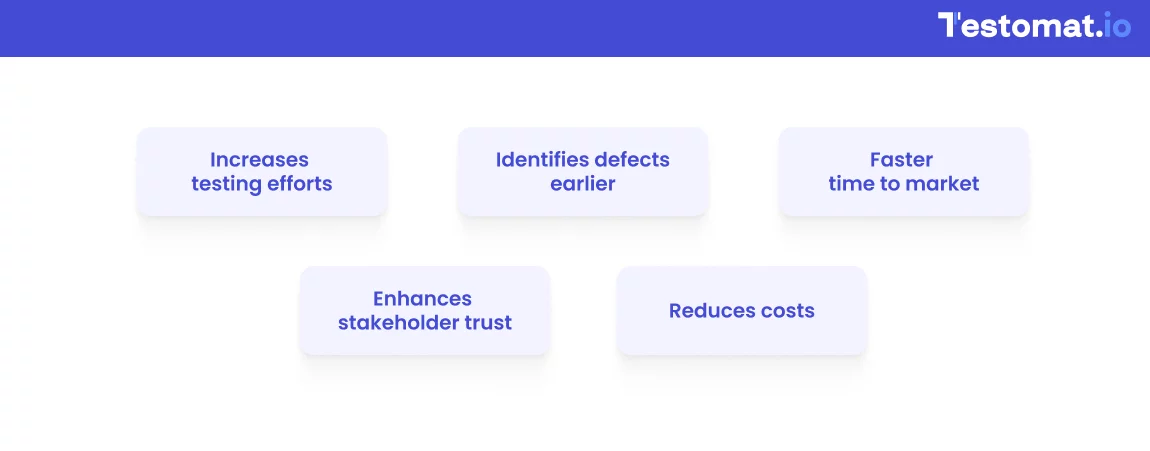
Let’s reveal the benefits in detail:
💠 Increases testing efforts
With risk based testing in software testing, you can make sure that teams apply resources and their efforts toward the most critical areas of the software. Utilizing this risk based testing in Agile allows them to concentrate their time and energy on the high-priority application areas, which could greatly affect users.
💠 Identifies defects earlier
When teams concentrate on risk based testing, they are able to detect issues and vulnerabilities in the early phases of the project. Such a preventative risk based testing strategy will help them avoid critical difficulties and decrease the likelihood of mistakes which may arise later in the cycle, thereby resulting in higher software quality.
💠 Faster time to market
Using risk based testing often results in quicker cycles. Teams can stop to test everything equally and prioritize the essential features for test execution. When they focus on features with higher risks, they can be quicker validated and verified. Teams can discover critical defects/issues earlier in the development lifecycle and deliver a functional and reliable product to the market faster.
💠 Enhances stakeholder trust
When teams align testing priorities with business risks, stakeholders can trust the QA process more. They understand that testing efforts have a focus on the features and functionalities that are critical to the project success.
💠 Reduces costs
With a risk based testing approach in agile, teams can achieve the most risk coverage with optimal resources for QA work. Thanks to concentrating test efforts on high-risk areas, they can increase bug finding rates in high-priority business features and functionality without growing the test budget, as well as reduce the total cost of the development.
Limitations Of Risk Based Testing
While RBT can help maximize the efficiency of the QA process, it also comes with its own set of challenges. Here are some of them:
❌ Poor planning
Improper planning presents major challenges that may result in a chain reaction of problems across the project’s lifespan. So, there is a need to have a well-structured plan to run critical and priority tests first to prevent the final product from failing.
❌ Potential Overlook of Lower-Risk Areas
When focusing on high-risk areas, lower-risk functionalities might receive less attention. Therefore, it might lead to non-critical bugs being overlooked. In the long run, it can reduce the overall software quality and compromise user experience, even if the high-risk areas function correctly.
❌ Initial Time Investment
While effectively applying a risk based approach in testing, its initial phase needs a significant time investment. So, to set up an RBT, teams should organize a phase for risk identification and prioritization, which involves significant time and effort, especially in projects with tight timelines or where immediate results are required.
❌ Require Skillset Development
The lack of knowledge of risk assessment methodologies can lead to serious consequences in QA work. Teams should be well-versed in how to effectively identify, evaluate, and prioritize risks. Also, they should know about tools or platforms, which are helpful in risk assessment. However, skill development can be seen as a barrier, especially for smaller teams or organizations with limited resources.
❌ Incomplete coverage
When applying a risk-based approach, teams test only critical components of software applications, which means other important components are not yet fully tested. As a result, teams may deal with incomplete test coverage, which may lead to a higher risk of system failures.
Steps in a Risk-Based Testing Approach
The best way to implement a risk based approach testing within software testing is the following:
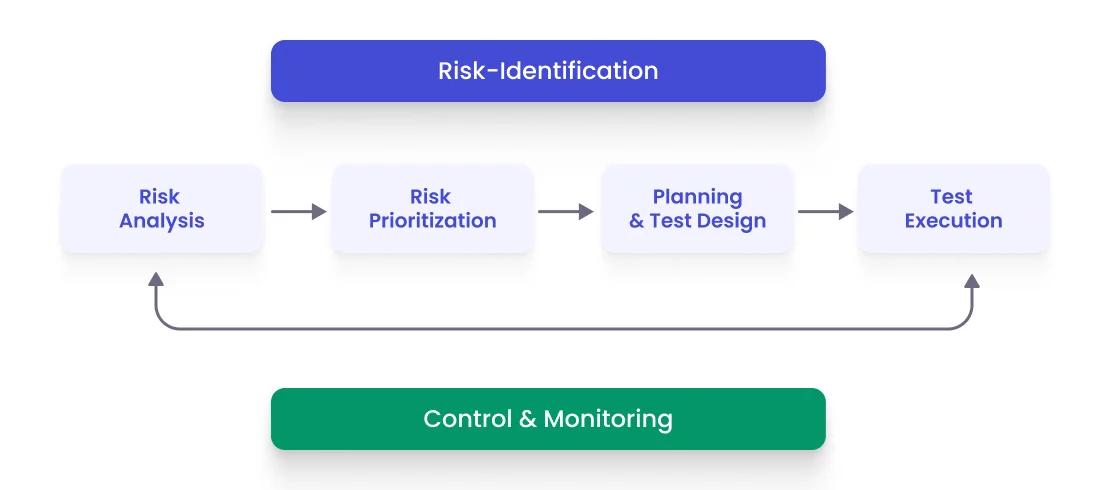
#1 Step: Risk Identification
At this step, stakeholders, developers, business analysts, and testers come together to discuss areas which are prone to errors. Thanks to their knowledge of the project, historical data and information for similar projects, defect reports, user stories, and industry expertise, they can identify potential issues.
#2 Step: Risk Analysis
Once the risks have been identified, you should undergo analysis to determine their likelihood and potential consequences. A risk-based approach focuses on the highest risks, so you need to define and rank them properly. While ranking, you need to take into account the complexity of each area and calculate which risks present a significant danger to the organization or only cause minor inconveniences.
#3 Step: Risk Prioritization
Once you have identified and analyzed the risk, you need to prioritize risks. It’s important to mention that not all risks are equally critical. That’s why it is important to address high-impact and high-likelihood risks with the highest priority first, while medium and low priority risks can be solved later.
#4 Step: Test Planning & Test Design
At this step, you need to clearly define the test objectives, scope of testing, test cases, and testing strategy to respond to the identified risks. It’s also imperative to define the approaches, select relevant tools and frameworks, and create tests for high-priority risks. Additionally, you need to allocate the required resources, including test environments, teams, and time, according to the risk prioritization to make certain the test plan is implemented effectively.
#5 Step: Test Execution
Once the test cases are designed and budgets have been approved, you can start the QA process. You need to run tests according to the testing plan. This phase involves conducting tests and actively monitoring and responding to emerging risk information. After this step is completed, the process can begin again as new code, features, and functionality are added to the app.
#6 Step: Risk Control and Monitoring
At this step, you should control and monitor the risk-based test execution. When adding new test cases, updating or removing less relevant tests, you need to take into account new risks and prioritize them. Also, you can add extra test cases and allocate resources for them.
📊 Risk-Based Testing Results Reporting and Metrics
Below you can find some important reporting and analyzing metrics of risk-based testing. Let’s take a closer look below:
Number of Risks Identified
With this metric, testing teams can count the total number of unique risks that have been identified by using various activities – brainstorming sessions, requirements analysis, design reviews, and document them clearly with a test management software for further risk assessment and analysis. Use this metric to evaluate the effectiveness of your risk-identification efforts over time.
🧮 Example Calculation of Total Risks
If during a test planning phase, your team identified:
• 5 risks in a brainstorming session
• 3 risks during requirements review
• 2 risks from defect history
• And 1 duplicate across these was later merged
➡️ Total unique risks = 5 + 3 + 2 − 1 duplicate = 9 risks identified
🔺 Notes: Count unique risks, not duplicates.
Risk Priority Number
This metric can be used for quantitative or qualitative assessment and to determine which areas of the software or which functionalities should receive the most attention and effort. It helps test teams to rank identified risks based on their consequence and probability of risk. Risk Priority is usually calculated using a formula based on the Risk Priority Number (RPN), which follows the common method of risk-based testing and Failure Mode and Effects Analysis (FMEA).
In this formula:
- Severity – mark of how serious the impact would be if the risk occurred (e.g., scale 1–10)
- Likelihood – likelihood the risk is to occur (e.g., scale 1–10)
- Detectability – estimation of the issue detection before reaching the user (e.g., scale 1–10, where 1 = easily detected, 10 = hard to detect)
🧮 Example Calculation of Risk Priority
Suppose for a specific risk:
• Severity = 8 (high impact)
• Likelihood = 6 (moderately likely)
• Detectability = 7 (not easily detected)
➡️ Risk priority = 8 × 6 × 7 = 336
🔺 Notes: The higher the risk’s priority, it should be treated as a high-priority risk.
Number of test cases planned VS executed
When applying this metric, teams can measure the proportion of prepared test cases compared to the total tests which have been planned. Knowing that information, they can understand whether the test preparation stage is going according to plan and there are no delays or issues in test case development process. This metric helps QA teams track progress during test cycles, identify bottlenecks in test execution and report status to stakeholders. Also, tell about the current state of quality and test activities.
🧮 Example of execution rate
• Planned test cases: 120
• Executed test cases: 90
➡️ Execution Rate = (90 / 120) × 100 = 75%
Test cases executed
With this metric, teams can overview of how many tests are succeeding versus how many are failing. When teams see a high number of failures, it indicates instability or bugs in features which are not yet complete or working correctly. A high failure rate means the QA work is effective in finding issues.
🧮 Example metric of Executed Test Cases
• Passed 80
• Failed 10
• Skipped 5
• Blocked 3
• Not Run 2
➡️ Test Cases Executed = 80 + 10 + 5 + 3 = 98
🔺 Notes: Test Cases Executed = Total Test Cases with Status ≠ Not Run or Blocked
Defect density
This metric shows teams how many bugs are in a specific piece of code (defect density) and how critical that piece of code is to the business or system (risk identified). It helps spend less time on low-risk and low-defect-density areas and use the budget and schedule efficiently. Most teams calculate defect density as the number of defects per thousand lines of code (KLOC), but some of them count per module or function points.
🧮 Example Defect Density Metric
• 20 defects in a module
• 10,000 lines of code
➡️ Defect Density = (20 x1000) / 10,000 = 0.2 defects per KLOC
➡️ For example, if you find 2o bugs in 10 modules, the bug density will be 20 ÷ 10 = 2 per module
Number of test cases of high severity still open
Thanks to this metric, teams understand that there are still issues that block the software from being released and could have severe consequences – system crashes, data loss, major functionality breakdown, security vulnerabilities without fixing. It helps measure unresolved risk before release, drives prioritization during regression or release readiness, Informs stakeholders about potential blockers.
🧮 Example of Number of test cases of high severity still open
You have 50 test cases marked as high severity:
• 20 passed
• 10 failed
• 5 blocked
• 5 skipped
➡️ Remaining high-severity test cases still open: 50 – (20+10+5+5) = 10
Test effectiveness (risks identified and mitigated)
With this metric, teams can validate whether risk assessment and identification are accurate. They can also understand if a risk-based approach works or if their strategy and coverage need to be re-evaluated. Guides continuous improvement for test planning and execution. Helps stakeholders assess test quality and coverage.
🧮 Example of Test Effectiveness
• Total risks identified: 20
• Risks successfully mitigated during testing: 15
➡️ Test Effectiveness = (15 / 20) × 100 = 75%
🔺 75% test effectiveness means a strong alignment between risk identification and resolution.
Test coverage report
This metric determines the level to which your efforts have covered the codebase. Teams can assess the completeness of their effort and be in the know how thoroughly the software has been validated.
🧮 Example Automation Code Coverage Report
• Total test cases: 1,200
• Automated Test cases: 960
➡️ Automation Code Coverage = (960 / 1,200) × 100 = 80%, Risk coverage by report
Risk coverage
When considering the risk coverage, teams can find out how much of the company’s risk is covered by test cases. They will have a clear understanding of how effectively the test strategy has been implemented and see which identified risks have been addressed or covered by test activities.
🧮 Example Risk Coverage report:
• Total Identified Risks: 20
• Risks Covered by Test Cases: 15
➡️ Risk Coverage = (15 / 20) × 100 = 75%
Applying this metric allows testers to see if they tested the right issues/bugs effectively and focus on the most important risks. They can also find out which identified risks are now fixed or handled and why their efforts were spent on specific crucial areas. They can also discover if any big risks remain and if the software is ready to launch.
When tracking metrics mentioned above, you can make certain that your efforts are thorough and consistent. While there are a lot of other metrics you can track, it is essential to use those that can get you closer to your business goals and launch high-quality software.
Comprehensive Summary Risk-Based Reports
Risk identification testing based matrix give us clear visibility, making it easier to understand the current level of risk exposure. Support more efficient use of testing resources by reducing time spent on low-risk areas. Vice versa, pay attention to higher severity failure areas which have a higher impact on risks. At the end of the day, it gives us a clearer objective to aim for from a testing perspective. We’re not just guessing what’s important; we know what’s important now.
Use risk based traceability matrix to ensure each risk has one or more test cases linked. If we diagnose the severity of risk as high, usually we retest such test cases using regression testing along with risk based testing to reduce the perception of failure in the future.
Summary risk based testing reports help QA managers provide information clearly to business stakeholders, as well. They can reassess risks with greater confidence, knowledge, and information to decide to release or not release or continue testing.
Best Practices For Implementing Risk-Based Testing
Below we highlight some tips and tactics to follow to lead to a successful RBT implementation:
- Before evaluating risks, you need to define clear and consistent criteria for them. Also, you can use risk prioritization matrix and engage all stakeholders into the risk prioritization process.
- You can apply a risk breakdown structure to help all engaged parties identify the risk prone areas and categorize many sources from which the project risks may arise.
- You can use risk-based metrics for tests, which can help you visualize and show a lot of relevant information about test efforts, like the risk closure and status.
- You can utilize test automation frameworks and AI-based tools to speed up the RBT process and improve quality.
- You can use test cases that cover essential functionalities, consistently update and maintain in order to keep them relevant.
- You can apply a test case management tool like testomat.io to streamline the implementation of RBT in agile for better risk identification.
Bottom Line: What About Using RBT?
Risk-based testing approach allows teams to prioritize the critical functionality of the software or system. When using this approach, you can optimize the QA process and target your testing efforts towards the areas of your application that are most likely to cause problems. By identifying, assessing, analyzing, and mitigating risks based on their prioritization, they can eliminate over-testing and focus on checking the most critical areas.
However, before establishing risk based testing approach, you need to make sure that communication between the stakeholders, software engineers and testers, which are engaged in the software project, is open and clear. They should do their best to identify and address potentially critical risks in the developed software products.
🙂 Drop us a line if you are interested in adopting RBT (Risk Based Testing) in your QA process.
Frequently asked questions
What is Risk-Based Testing, and how does it differ from traditional test prioritization?

Risk-Based Testing (RBT) focuses on identifying, assessing, and testing the areas of a system that have the highest likelihood of failure or the greatest business impact if they fail.
-
Traditional prioritization might rank tests by module or feature importance.
-
RBT combines likelihood (probability of defect) and impact (business, financial, reputational damage) to guide test scope and depth. This ensures the most critical risks are validated first, even under tight timelines.
How do you implement a Risk-Based Testing strategy in real-world projects?

A typical RBT process involves:
-
Identify risks — via stakeholder interviews, past defect data, architecture review.
-
Assess risk level — assign scores for likelihood and impact (e.g., 1–5 scale).
-
Prioritize tests — focus automation and exploratory testing on high-risk areas first.
-
Plan coverage — ensure low-risk areas still get minimal validation but without over-investment.
In Agile teams, RBT can be part of sprint planning, where stories tagged as high-risk get early and deeper testing.
How do you measure success and ROI for Risk-Based Testing?

Key metrics include:
-
Defect Detection Rate in High-Risk Areas — high detection means good risk targeting.
-
Escaped Defects in Critical Modules — fewer escaped critical defects indicate effective RBT.
-
Testing Effort vs. Risk Reduction — tracks whether focusing on high-risk items reduces overall project risk with less testing effort.
ROI is evident when fewer critical bugs reach production and testing resources are allocated efficiently without compromising quality.
